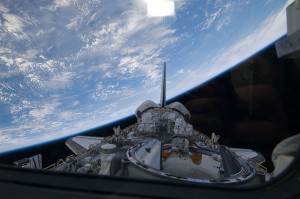FRIDAY, 29 JUNE 2012
The lichens were transported into space in a small unit called EXPOSE-E, along with other organic samples. The unit was placed in orbit around Earth on the International Space Station, as part of an ongoing project by the European Space Agency, which aims to model the evolution of organic compounds in space. During their journey, the samples were repeatedly exposed to a temperature range of -12°C to +40°C, and had minimal protection from cosmic radiation. Lichen samples are thought to have survived the voyage by going into a dormant state.The findings have important implications for our thinking about how life first began on Earth. One idea is that rather than evolving on Earth, life could have been carried here on debris such as asteroids (a phenomenon known as panspermia). A powerful counterargument to panspermia is that harsh conditions in space make it impossible for life forms to survive such a journey. These results suggest otherwise. While there is no evidence that large, complex organisms could survive such a journey, more resistant life forms could theoretically travel from planet to planet. The lichen may also help us to develop more powerful sunscreens, if we can understand how they survive high solar radiation levels.
doi:10.1089/ast.2011.0736.Written by Amelia Penny.

